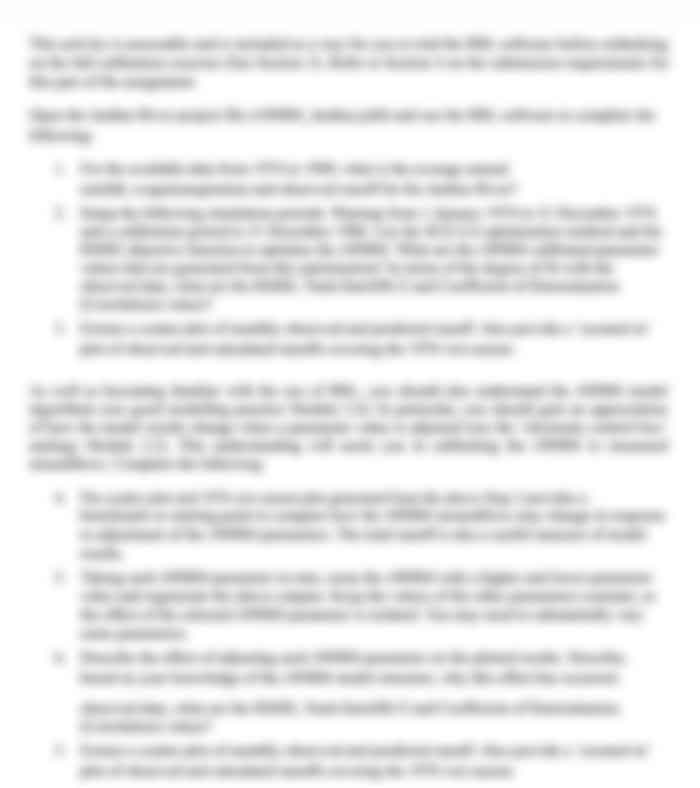Intermediate Test Marketing EBE Assignment
1) Consider the following statement: We support the idea that we should consider consumers
wants, the companys requirements, consumers long term interests, and societys long term
interest. This statement fits to one of the marketing management orientations. Which one
fits best?
a) The Product Concept
b) The Marketing Concept
c) The Societal Marketing Concept
d) The Selling Concept
2) In marketing we distinguish between needs, wants and demands. How can you describe a
demand?
a) A demand is a status of felt deprivation
b) A demand is a human want that is backed up by buying power
c) A demand is a form the human needs takes as they are shaped by culture and individual
personality
d) A demand is a combination of products, services and information
3) What is customer equity?
a) The portion of the customers purchasing that a company gets in its product categories
b) The value of the entire stream of purchases a customer makes over a lifetime of
patronage
c) The total combined customer lifetime values of all of the companys customers
d) The profit per customer
4) The BCG Growth-Share Matrix indicates for each Strategic Business unit (SBU)
a) Growth in sales of the company, growth rate of the total market, and the degree of
penetration in the market.
b) Sales of the company, growth rate of the total market, and relative market share (2/66-7)
c) Sales of the company, relative market share, and competitive strength of the company.
d) Growth in sales of the company, degree of penetration in the market and relative
distribution.
5) A household electronics company is launching a new product and wondering how best to
reach a selected group of customers. The phase this company is in is
a) Segmentation
b) Targeting
c) Positioning (p. 75)
d) Market development
6) Companies typically have a mission statement. What is true about good mission statements?
a) A company mission statement should clearly state which products the company sells.
b) A company mission statement should be phrased in terms of opportunities and threats to
the company.
c) A company mission statement should be defined in terms of satisfying basic consumer
needs. (p. 63)
d) A company mission statement should be based on the objectives and goals of a company.
7) When conducting a SWOT, what is the crucial difference between a weakness and a threat?
a) Weaknesses are external, threats are internal.
b) A weakness can be turned into an opportunity the same is not true for a threat.
c) Weaknesses are more dangerous for companies than threats.
d) None of the above statements are true (p. 78)
8) Who are part of the customer value delivery network?
a) The production, marketing, and sales offices in a company
b) The company, its suppliers, its distributors, and the customers (p. 72)
c) All employees of a company who are in direct contact with customers
d) Distributors, sellers, and customer service employees.
9) Toms Shoes provides a new pair of shoes to a child in need with every pair of shoes sold.
Hence, their slogan one for one. This is an example of:
a) Cause-related marketing
b) Concentrated marketing
c) Demarketing
d) Increased diversity
10) What are the major actors in the companys microenvironment?
a) Competitors, Company, Suppliers, Publics, Marketing intermediaries, Customers
b) Competitors, Suppliers, Publics, Marketing intermediaries, Customers
c) Competitors, Suppliers, Publics, Marketing intermediaries, Customers, Government
d) Competitors, Company, Suppliers, Publics, Marketing intermediaries
11) Imagine you are a manager of a firm. You hired several lobbyists to be able to change new
legislation for your firms benefit. What kind of response is this to your environment?
a) Reactive response
b) Aggressive response
c) Proactive response
d) Passive response
12) Health consciousness can affect buyer behavior. This characteristic can be classified as:
a) Cultural characteristic
b) Social characteristic
c) Personal characteristic
d) Psychological characteristic
13) The tendency that consumers interpret information in a way that will support what they
already believe can be termed:
a) Selective attention
b) Selective distortion
c) Selective retention
d) None of the above
14) Marketers who are targeting students are segmenting the market according to a
a) Cultural characteristic
b) Social characteristic
c) Personal characteristic
d) Psychological characteristic
15) Maslows hierarchy of needs:
a) Is a rank order of product categories that satisfy consumer needs
b) Is a rank order of the most important consumer needs
c) Is a rank order of consumer segments that are differ in their need for the companys
products, e.g., early adopters and mainstream customers
d) None of the above
16) Which of the following statements is/are true?
Statement 1: To be effective, market segments must be based on at least two different
segmentation variables, each belonging to different major segmentation variables.
Statement 2: It is possible, in principle, that young adults and senior citizens belong to the
same market segment.
a) I is false, II is true. (p. 214)
b) I is true, II is false.
c) I and II are false.
d) I and II are true.
17) Which market targeting strategy ignores market segment differences and goes after the
whole market with one offer?
a) Concentrated marketing.
b) Micromarketing.
c) Differentiated marketing.
d) None of the just mentioned alternatives. (p. 225)
18) To gain a leadership position, firm XYZ delivers superior value to customers by providing
good prices and convenience. Which value disciplines is described here?
a) Customer intimacy
b) Product leadership
c) Operational excellence
d) Overall cost leadership
19) Which of the following statements is NOT correct?
a) Market challengers focus only on market leaders to gain market shares.
b) Market nichers have little interest in challenging market leaders.
c) Market leaders often protect their position by expanding total demand and market
shares.
d) One of the strategies market challengers and followers use is to imitate market leaders.
20) In the following stages of approaches to marketing strategies, in which stage does marketing
generally play a relatively less important role in a firms perspective? Please choose a proper
answer.
a) Formulated marketing
b) Entrepreneurial marketing
c) Intrepreneurial marketing
d) Viral marketing

